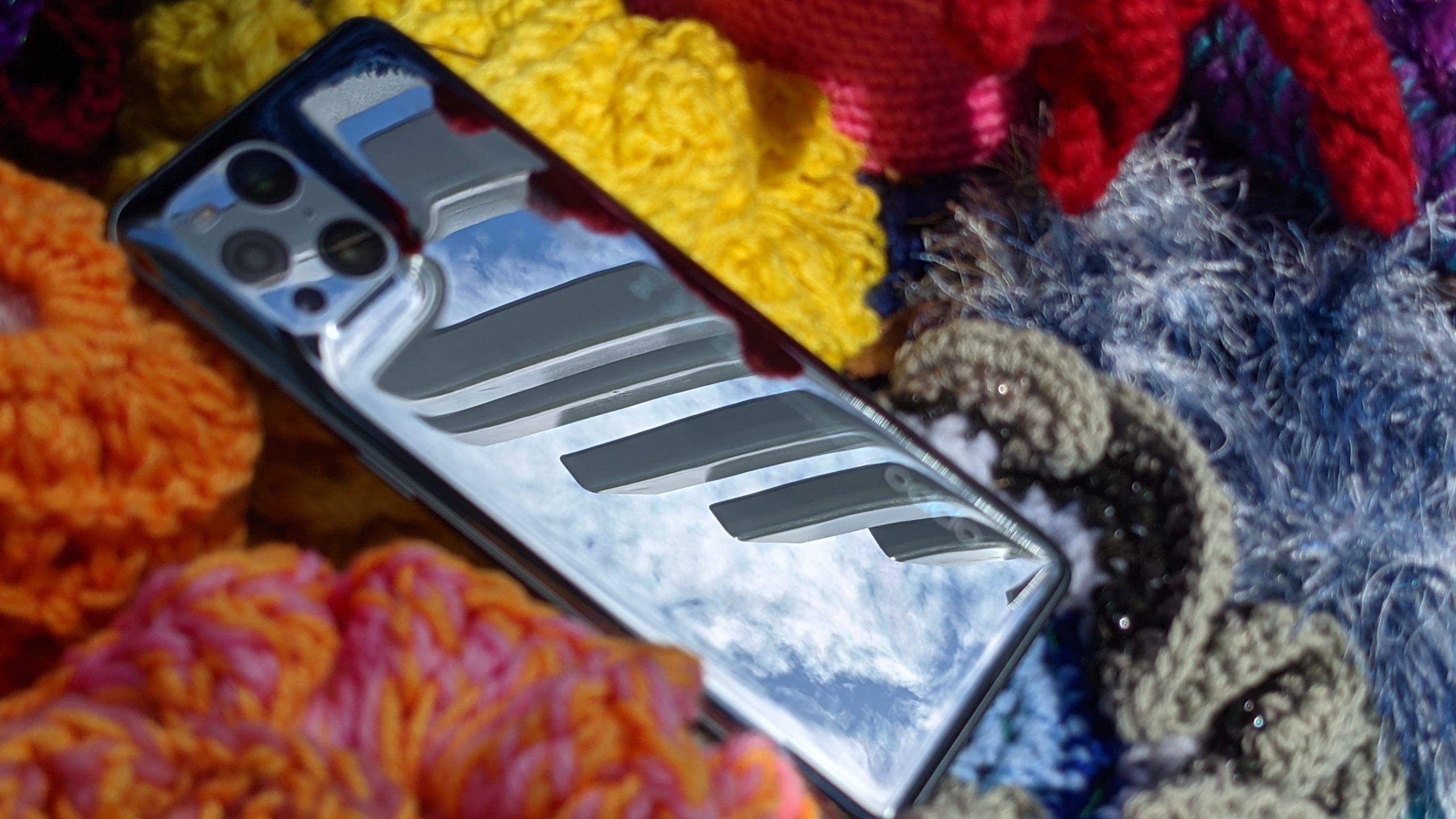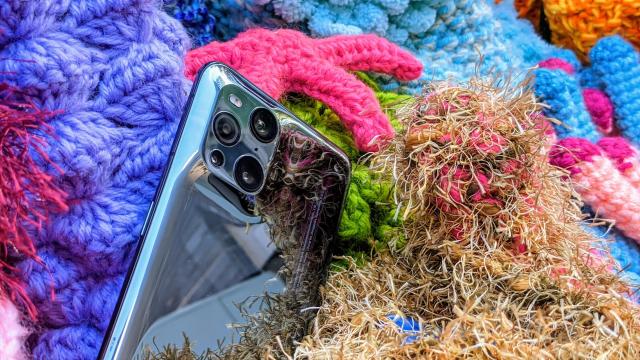Only a few years ago, Oppo was competing for attention with Huawei, Motorola, Nokia, LG and Sony. Nowadays, the field is much less crowded. After last year’s Find X2 Pro, it felt like Oppo graduated from being a challenger to a serious contender in the high-end Android smartphone arena. But the follow-up Find X3 Pro proves that holding onto a title is usually a little trickier than winning one.
Make no mistake; the Find X3 Pro has the requisite hardware to put it in competition with heavyweight handsets like the iPhone 12 Pro and the Samsung Galaxy S21 Ultra.
If you’re after a big screen, top-end specs, an eye-catching premium design and a powerful rear-lens camera, that’s what you’ll find here.
However, in a product cycle where everyone else seems to be innovating on cost, the eye-watering $1699 asking price attached to the Find X3 Pro can feel a little behind the times.
If you’re in the market for a new phone, Oppo is still a good option but it’s not really the cheap one anymore. Oppo
Oppo Find X3 Pro

Oppo Find X3 Pro
What is it?
Oppo’s latest Android flagship smartphone
Price
$1699
Like
Unique microscope lens, top-notch display tech, wireless + super fast-charging!
Don't like
Pricier than I’d like, okay-ish battery life, semi-generic glass design
The Oppo Find X3 Pro offers slightly more than an incremental upgrade

If you put the Oppo Find X3 Pro next to its predecessor, you’ll quickly notice how little has changed.
Like the Find X2 Pro, the Find X3 Pro runs on Color OS (Oppo’s iOS inspired Android skin), is IP68-rated against water resistance, has an in-display fingerprint sensor and supports 5G mobile connectivity.
As you might expect, the Qualcomm processor inside the Find X3 Pro is a little more current (Snapdragon 888 rather than 865).
Compared to the Find X2 Pro, you also get a little more RAM (12GB rather than 8GB), a little less storage (256GB rather than 512GB) and one more lens on the rear camera.
[related_content first=”1679213″]
For those keeping track, the Oppo Find X3 doesn’t have a headphone jack or a MicroSD slot. However, it does come with a 6.7-inch Quad HD+ screen more than capable of giving Samsung and Apple a run for their money when it comes to fidelity.
Even if I didn’t love the added heft and hassle attached to the larger form-factor, I found the upgrade in picture quality and snappiness immediately endearing here.
Clocked at a refresh rate of 120Hz, Oppo has opted to use the fancier-sounding LTPO AMOLED rather than something more basic.
Without getting too deep into the lore around display technologies, the main benefit of this is that the screen on the Find X3 Pro can deliver adaptive and high-refresh rates without the usual hit to battery life. At least on paper.
Screen-tech aside, the most visible design departure from the Find X2 is the Find X3’s new look.
Rather than reprise the leather-laced design of 2020, the Find X3 Pro opts for a glossy but relatively generic curved glass design.
It’s nice enough to handle, but it doesn’t have the same kind of distinctive personality or cushy-feel factor as its predecessor.
The choices made here ultimately leave the Find X3 Pro with a camera bump that’s significantly less imposing than most of its competition.
I remain unconvinced that this particular detail matters that much to that many consumers, but if you disagree, it’s probably something worth noting.
The Find X3 Pro also sees Oppo finally add support for Qi wireless charging, which some would say was the single most significant shortcoming of last year’s Find X2 Pro.
It’s a welcome move that puts it in line with most other devices of its class. But this feature’s arrival is undercut by just how late in the game it is.
Samsung and Nokia started offering wireless charging in 2013. Apple got on board four years later, and Oppo joined the Wireless Power Consortium for some devices back in 2019. Better late than never, I guess.
The Camera: Microscope > Macro
If you’re looking to compare the Find X3 Pro to Samsung’s Galaxy S21 Ultra, the camera hardware is where you’ll want to focus your attention.
If you’re spending more than $1000 on a smartphone nowadays, you’ll either end up settling on something with a borderline-excessive level of optical zoom or something that spruces up even your most amateur pics using machine learning-enhanced algorithms.
The Oppo Find X3 diverges from this typical battle of brains-versus-brawn in an intriguing and unique way.
Four camera lenses on the back complement the single 32-megapixel (f/2.4) on the device’s front. There’s a 50-megapixel (f/1.8) primary lens, a 13-megapixel (f/2.4) telephoto lens, a 50-megapixel (f/2.2) ultrawide lens and a 3-megapixel (f/3.0) macro lens that’s used for the Find X3 Pro’s “Microscope” photography setting.
To Oppo’s credit, this feature can be used to produce some genuinely incredible close-up shots that bring an alien and otherworldly look to everyday objects.
Is this inclusion more of a party trick than an inflection point for modern smartphone photography? Absolutely – but who doesn’t love a little magic?
Whenever someone asked me about this phone during my time with it, the microscope photography mode was the one thing I absolutely couldn’t wait to show them.
As for the other three lenses, the Find X3 Pro delivers more or less what you’d expect. In daylight situations, it feels responsive to use, gives you many options to play and provides strikingly colourful results with minimal hassle.
Night shots are similarly impressive. Even if it’s easy to squint, split hairs and spot the difference between how the Find X3 Pro handles low-light subjects relative to Apple, Google and Samsung — you’re still probably going to come away happy with the results.
I was less thrilled with Oppo’s choice to tune the hardware here away from high-end zoom. Rather than the 10X hybrid zoom found in the Find X2 Pro, the Find X3 Pro caps out at 5x – and it doesn’t look great.
On this specific front, Oppo’s latest is a poor match for Samsung’s photography powerhouse.
When it comes to portrait photography, the Find X3 Pro sits in good company but fumbles a few of the finer details.
The quad-lens kit on the back delivers solidly detailed portrait shots of well-lit subjects but can’t compete with the Pixel 5 when it comes to depth of field.
For household creatures such as cats, the difference can be particularly noticeable.
If you’re using the selfie camera, you’ll also find that it can’t compensate for poor lighting as effectively and it defaults to a lot of beautification settings, which isn’t ideal – even if they can be disabled fairly easily.
The Oppo Find X3 Pro returns to its roots
For a long time, Oppo had a legacy of offering an Android-based experience that felt akin to Apple’s iPhones. If you’re looking at the Find X3 expecting to find a cheaper alternative to Apple’s latest, it’s easy to see the resemblance.
But the devil is in the details.
For Apple, that’s always been iOS. Unfortunately, Oppo still doesn’t have a great pool of talent and expertise to draw on when it comes to the software side of things.
This is as true for the AI-based image processing tech found in the camera as it is the general moment-to-moment experience of using Color OS.
The latest version of Oppo’s take on Google’s Android operating system is much better than it used to be.
It feels smoother to use and easier to tinker with. Still, it didn’t take long for the usual weird inconsistencies and Bluetooth-related bugbears to make themselves known.
When you’re spending $600 on the latest Oppo Reno rather than $1200 on the iPhone 12, these quirks feel like something you can live with. When you raise the stakes to $1600, that’s less the case.
That being said, this tendency to fall back on old habits sometimes works in Oppo’s favour.
Take, for example, the 65W Super VOOC 2.0 fast charging. So long as you use the Find X3 Pro with the proprietary charging brick, you’ll be able to spruce up the 4500mAh battery inside the device from 0% to 100% in about half an hour.
That’s freakishly fast.
I found myself getting through even long days comfortably using the Find X3 Pro. I’d usually end the day with around 30 per cent battery remaining.
A full charge would usually work out to around 4-5 hours of screen time. Granted, I’m someone who recently swapped mobile providers to an NVMO that does not offer 5G connectivity.
If you are living that 5G life, be prepared to adjust your expectations accordingly. You can always make up some of the difference by turning off some of the thrills but netting the faster speeds that the Find X3 Pro is capable of delivering usually comes at the cost of an hour or so of screentime.
Oppo Find X3 Pro Price

If you live in Australia, pricing the Oppo Find X3 Pro costs just $1699. Unlike the iPhone or Samsung’s Galaxy range, there’s only a single model to keep track of here – which is kitted out with 12GB of RAM and 256GB of onboard storage.
Comparatively, the iPhone 12 Pro starts at $1699 for 128GB of storage, while the Samsung Galaxy S21 Ultra enters the fray at a pricey $1849 for 128GB of storage.
Matching the 256GB found in the Find X3 Pro pushes you up to $1869 and $1949 respectively.
So in terms of high-spec phones, the Find X3 is one of the cheaper current flagships.
Should you buy it?

Squeezed between value-rich options like Google’s Pixel range on one side and futuristic devices like the Galaxy Z Fold2 on the other, the argument for handsets like the Find X3 Pro feels more challenging and harder to make.
There’s a lot to like here, but the price still feels high, despite being cheaper than the equivalent Apple and Samsung devices.
As someone who heartily recommended the Find X2 Pro last year, the Find X3 Pro often feels like it’s two steps forward, one step back.
It does a great job of addressing the areas where predecessors fell short. It inherits plenty of strengths and distinguishes itself with unique features like microscope photography.
However, as much as I enjoyed my time with it, I found details like the reduced storage, zoom and the higher price tag hard to shake.
If this device had landed in a pre-COVID Android flagship landscape (or even at the same price point as last year’s Find X2 Pro), we’d probably be having a different conversation.
When Oppo is at its best, you’re not just getting a deal but the better end of it. Here, it’s offered an easier sell based on what it isn’t rather than what it is. If you’re already not vibing with Samsung or don’t want to lock yourself into the iOS ecosystem, the Find X3 Pro is the obvious choice.
Still, it’s hard not to wish for a world where Oppo earned that title for reasons that extended beyond Huawei no longer being a competitor in Australia anymore.
